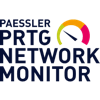Integrate Opsgenie with PRTG

Overview
What does the integration offer?
Opsgenie provides a powerful bidirectional integration with PRTG. When a sensor is down in PRTG, a corresponding Opsgenie alert is automatically created, containing detailed information. Opsgenie provides rich notifications with on-call rotations, scheduling features, and alert escalations to ensure the best monitoring management for PRTG customers. As users execute actions on the alerts acknowledged, the sensor information on PRTG is automatically updated according to mapped actions.
How does the integration work?
PRTG to Opsgenie
When "sensor status down" notification is sent form PRTG, it creates an alert in Opsgenie.
When "sensor status up" notification is sent from PRTG, the related alert is closed in Opsgenie.
Opsgenie to PRTG
If Send Alert Updates Back to PRTG is enabled, actions for PRTG are run in PRTG when the chosen action is run in Opsgenie for alerts which are created by the PRTG.
The mapping feature is explained in detail in “Map alert actions” in this article.
Set up the integration
PRTG is a bidirectional integration. Setting it up involves the following steps:
Add a PRTG integration in Opsgenie
Map alert actions
Configure the integration in PRTG
Add a PRTG integration
If you're using Opsgenie's Free or Essentials plan or if you’re using Opsgenie with Jira Service Management's Standard plan, you can add this integration from your team dashboard only. The Integrations page under Settings is not available in your plan.
Go to Teams and select your team.
Select Integrations on the left navigation and then select Add integration.
Adding the integration from your team dashboard will make your team the owner of the integration. This means Opsgenie will assign the alerts received through this integration to your team only. Follow the rest of the steps in this section to set up the integration.
To add a PRTG integration in Opsgenie:
Go to Settings > Integrations.
Select Add integration.
Run a search and select “PRTG”.
On the next screen, enter a name for the integration.
Optional: Select a team in Assignee team if you want a specific team to receive alerts from the integration.
Select Continue.
The integration is saved at this point.Expand the Steps to configure the integration section and copy the integration URL.
You will use this URL while configuring the integration in PRTG later.Select Turn on integration.
The rules you create for the integration will work only if you turn on the integration.
Map alert actions
You can define mappings between Opsgenie actions and PRTG actions (also when the source of the alert is PRTG), which requires additional authentication for your PRTG account.
Select Edit on the configuration page to edit the integration.
Under the Authenticate for sending alert updates to PRTG section, select Authenticate with a PRTG account check box.
Enter values for the following:
Username: The email address from your PRTG account settings
Passhash: The passhash from your PRTG account settings
PRTG URL: The URL of your PRTG login page
Select Save.
Expand the Outgoing section.
Select Send alert updates back to PRTG check box.
Select alert actions for which you want to send updates back to PRTG.
Every time an action you selected happens, a corresponding sensor is acknowledged in PRTG.
Configure the integration in PRTG
In PRTG, go to Setup > Account Settings > Notification Templates.
Select Add new notification > Execute HTTP Action.
Paste the URL you copied while adding the integration in Opsgenie into URL.
For SNI Handling, select Send SNI.
Copy
api.opsgenie.comand paste it into SNI Name.For HTTP Method, select POST.
Copy the POST data from either of the following files linked to, as applicable) and paste it into Payload.
For PRTG version 16.x.24. or above, use this post data.
For other versions, use this post data.
Select an HTTP version as applicable.
Select Save.
Authenticate via OEC (for on-premise PRTG)
Opsgenie Edge Connector (abbreviated as OEC) is a prerequisite for configuring the outgoing authentication of PRTG integration. You can combinedly use OEC and PRTG scripts to update alerts on PRTG. With this setup, you can deploy your own script, modify the ones provided, or run customized actions on PRTG.
STEP 1. Download and install the PRTG package from this repository.
Instructions for RedHat-based distributions
Run the following command :
rpm -i opsgenie-prtg-<your_version>.rpmIf you figure that the rpm package is obsolete, run the following command instead:
rpm -i opsgenie-prtg-<your_version>.rpm --nodepsIf you figure that the rpm package is already installed, run the following command instead:
rpm -i opsgenie-prtg-<your_version>.rpm --forceInstructions for Debian-based distributions
Run the following command:
dpkg -i opsgenie-prtg-<your_version>.debInstructions for Windows
Unzip Opsgenie integration zip file (contains the OEC package) into a directory.
For example: C:\opsgenie\oecInstall OEC by following these instructions.
STEP 2: Configure the PRTG integration for OEC
In Opsgenie, go to the integration configuration page.
Expand the Outgoing section.
Select the Authenticate with Opsgenie Edge Connector only check box.
You can make the other configuration through the integration configuration page or the OEC configuration file, config.json. The configuration set through the integration configuration page takes precedence over what’s in config.json.
STEP 3: Configure OEC
Use OEC and the PRTG script to update alerts on PRTG. To run actions in PRTG, OEC gets the configuration parameters from the configuration file, config.json (found at /home/opsgenie/oec/conf).
Configuration parameters
apiKey – The API key you copied while adding the integration in Opsgenie
prtgUrl – The PRTG URL with a subdomain in it. Example: https://opsgenie.my-prtg.com
username – The PRTG API username under Account Settings in PRTG
passhash – The PRTG API passhash under Account Settings in PRTG
The downloaded package includes the OEC utility (found in /usr/local/bin) and the script that OEC needs to run (found in /home/opsgenie/oec/scripts). Be sure to run OEC after configuring it.
Troubleshoot issues
If you have an older setup of the integration and want to make it work bidirectionally, add
sensorId, {{sensorId}}key-value pair to alert properties in your PRTG Integration configuration.If you are having trouble sending execute actions to Opsgenie, enable Send SNI.
Was this helpful?